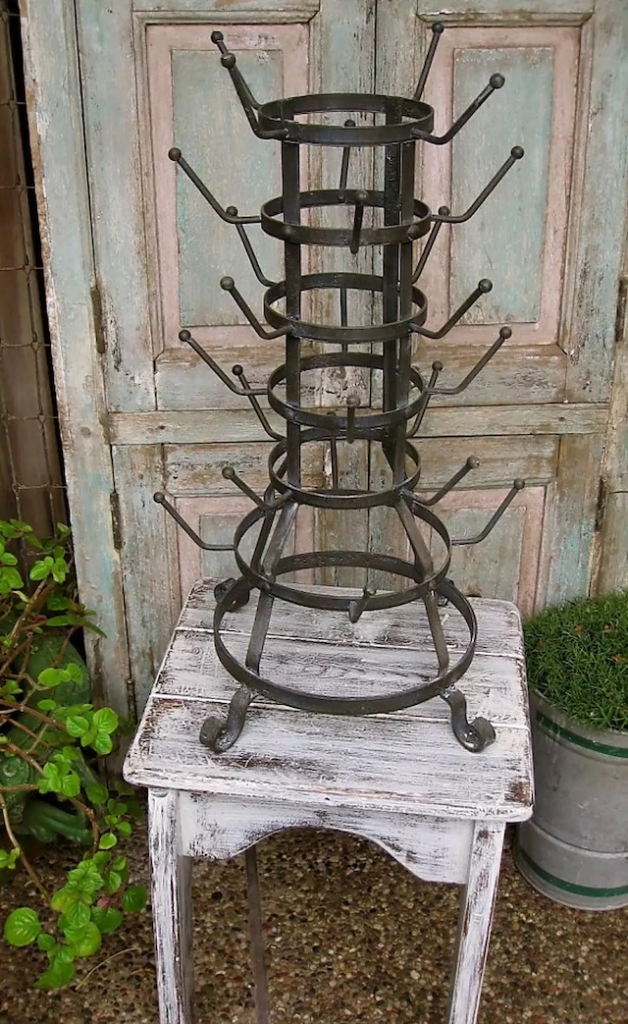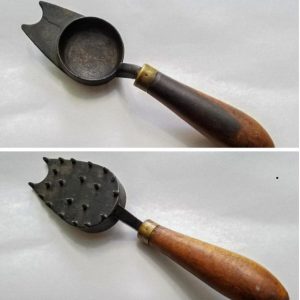Ever stumbled upon a rusty metal rack with spikes and wondered, what in the world is this thing? If you’ve seen one in your grandmother’s kitchen or tucked away in an antique store, chances are—it’s a bottle drying rack. This odd-looking device wasn’t just a quirky decoration. It was a kitchen and brewery workhorse, quietly revolutionizing how people cleaned and reused bottles for generations.
Let’s rewind time and take a deep dive into the story of this underrated tool—how it helped shape everyday life, faded from memory, and is now making a charming comeback.

What Is a Bottle Drying Rack, Really?
At first glance, it might look like a torture device or a birdcage gone wrong. But this circular rack, often made of iron or steel, served a simple yet powerful purpose: drying bottles. Picture rows of glass bottles flipped upside down, resting on metal prongs after being washed. No fancy buttons. No electronics. Just clever design that used gravity and airflow to do the trick.
Before dishwashers and disposable packaging, people reused bottles constantly—milk, beer, wine, homemade juices. That meant they had to be thoroughly cleaned and dried, or mold and bacteria would ruin the contents. The bottle drying rack solved that with elegance and practicality.
Video: Vintage Bottle Drying Rack as a Ribbon Holder
The Industrial Boom: Why It Was a Game Changer
The rise of the bottle drying rack came during the 19th century, right alongside the explosion of glass bottle manufacturing. Bottles were everywhere—and they weren’t cheap. Households, breweries, dairies, and wineries all needed a reliable way to dry glass containers quickly and hygienically.
In breweries, especially, speed and cleanliness mattered. Bottles had to be scrubbed, sterilized, and dried before being refilled. The drying rack made this process manageable, even when hundreds of bottles were in rotation.
Homes benefited too. Farmers reused milk bottles. Families who brewed their own wine or kombucha needed to prep containers often. Without this drying tool, they’d be stuck propping bottles on towels or trying to balance them on windowsills—awkward and inefficient.
From Practical to Beautiful: The Artistic Twist

Here’s where it gets surprisingly cool. In 1914, famed Dada artist Marcel Duchamp picked up a bottle rack, slapped his signature on it, and declared it art. That simple gesture redefined what could be considered sculpture or artistic expression. Duchamp’s piece became one of the most famous “readymades” in modern art history.
And just like that, the bottle drying rack went from kitchen helper to gallery star.
The Decline: What Happened to Bottle Racks?
By the mid-to-late 20th century, things started to shift. Plastics took over. Single-use containers became the norm. Electric dishwashers replaced manual scrubbing. Glass bottles were no longer reused as frequently. As our homes modernized, bottle drying racks began to disappear—relegated to barns, basements, and eventually antique shops.
But like all good stories, this one had a twist.
Modern Comeback: A Rustic Revival

Today, the bottle drying rack is back—but with a twist. Instead of drying milk bottles, it’s holding coffee mugs in hip cafes. Instead of hiding in kitchens, it’s mounted proudly on walls as vintage decor. Some people use them as wine racks, herb gardens, or even jewelry displays.
Minimalist? Check. Functional? Double check. Instagrammable? Oh yeah.
And for those who are into sustainable living, this old-school tool is practical again. Glass bottles are making a comeback in zero-waste homes. People are once more looking for ways to reuse rather than discard—and that’s where the trusty bottle rack fits right back in.
Why It Still Matters Today
Video: Thrifted vs Styled : Vintage Bottle Drying Rack
In a world obsessed with convenience and fast fixes, the bottle drying rack reminds us of a time when people made do with smart, reusable solutions. It’s more than metal and prongs. It’s a symbol of resourcefulness. A nod to a time when quality and longevity mattered more than flash and waste.
Even if you’ve never used one, there’s something deeply satisfying about its simplicity. No plugs. No instructions. Just pure utility. And isn’t that kind of timeless genius worth remembering?
Conclusion: From Forgotten Tool to Vintage Treasure
What started as a humble kitchen gadget has become a storytelling piece. The bottle drying rack tells us about innovation, resourcefulness, and the quiet beauty of functional design. Whether it’s holding mugs in a trendy café or bottles in a farmhouse kitchen, it carries the legacy of an era that valued reuse and practicality.
Next time you see one, don’t just walk past it. Stop. Imagine the hands that used it. The bottles it held. The homes and breweries it helped run smoothly.



